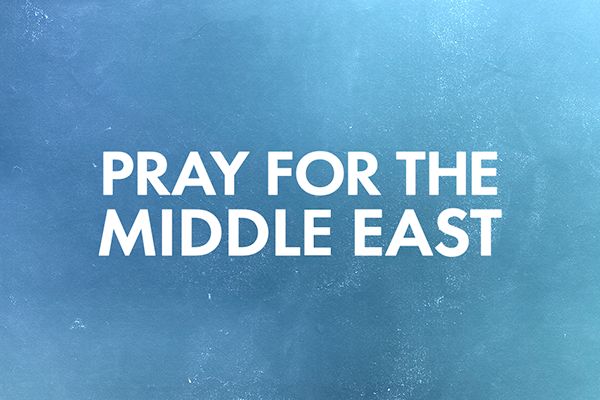Middle East Peace Efforts: A Journey Toward Stability and Harmony
The Middle East has long been a region of both strategic importance and political turmoil. From ancient history to the present day, the region has witnessed a multitude of conflicts, power struggles, and peace negotiations. However, amidst these challenges, various peace efforts have emerged, aimed at fostering stability and reconciliation between its nations. Despite ongoing tensions, the desire for peace and the pursuit of long-term solutions remain central to the region’s future.
In this article, we will explore some of the key peace efforts in the Middle East, the impact of these initiatives on daily life, and their significance for both the region and the world.
The Historical Context of Peace Efforts in the Middle East
The Middle East has a long history of geopolitical disputes and religious tensions. Key events that have shaped the region’s current state include:
- The Creation of Israel (1948): The establishment of the state of Israel, following the end of British rule in Palestine, sparked conflict with neighboring Arab nations. The Palestinian-Israeli conflict remains one of the most complex and deeply rooted issues in the Middle East.
- The Suez Crisis (1956): The Suez Crisis, involving Egypt, Britain, France, and Israel, highlighted the tension between regional powers and the global balance of power during the Cold War era.
- The Iran-Iraq War (1980–1988): A brutal conflict between Iraq and Iran that lasted for eight years, with devastating consequences for both nations and the wider region.
- The Gulf Wars (1990–1991, 2003): Conflicts involving Iraq, the U.S., and other global powers have had lasting impacts on the political landscape of the Middle East.
Despite these challenges, the international community has made persistent efforts to broker peace, and several landmark agreements and treaties have been signed over the years.
Key Peace Efforts in the Middle East
- Camp David Accords (1978)
One of the most significant peace efforts in the Middle East took place in 1978, when U.S. President Jimmy Carter facilitated the Camp David Accords between Egypt and Israel. This agreement resulted in the first peace treaty between Israel and an Arab country. Egypt agreed to recognize Israel’s right to exist, and in return, Israel withdrew from the Sinai Peninsula, which had been captured during the Six-Day War in 1967. The success of the Camp David Accords opened the door for other Arab nations to engage in dialogue with Israel, although the broader Israeli-Palestinian conflict remains unresolved.
- Oslo Accords (1993)
The Oslo Accords were a series of negotiations that took place between Israel and the Palestine Liberation Organization (PLO) in the early 1990s. The accords resulted in the mutual recognition of Israel and the PLO and the establishment of the Palestinian Authority (PA) in parts of the West Bank and Gaza. The Oslo Accords were hailed as a historic step toward a two-state solution, although challenges related to territorial disputes, security concerns, and the status of Jerusalem continue to impede progress.
- The Iran Nuclear Deal (2015)
In 2015, the U.S. and five other world powers (China, Russia, the U.K., France, and Germany) negotiated the Joint Comprehensive Plan of Action (JCPA) with Iran, commonly known as the Iran nuclear deal. The agreement aimed to limit Iran’s nuclear capabilities in exchange for the lifting of economic sanctions. While the deal was seen as a step toward easing tensions between Iran and the West, the U.S. withdrawal from the deal in 2018 under President Donald Trump reignited concerns about nuclear proliferation in the region.
- The Abraham Accords (2020)
The Abraham Accords, brokered by the U.S. in 2020, marked a breakthrough in Arab-Israeli relations. The agreements led to the normalization of diplomatic relations between Israel and the United Arab Emirates (UAE), Bahrain, Sudan, and Morocco. These peace agreements were seen as a major step forward, as Arab countries had previously been hesitant to formalize ties with Israel without resolving the Palestinian issue. The accords also fostered new economic and security partnerships in the region, though critics argue that they sideline the Palestinian cause.
- The Syrian Peace Process (Ongoing)
Syria’s ongoing civil war has prompted several peace initiatives and negotiations over the years, such as the Geneva peace talks and the Astana process. While the conflict remains unresolved, there have been some signs of diplomatic engagement aimed at reducing hostilities and restoring stability. These efforts involve not only Syria’s government and opposition groups but also regional powers such as Turkey, Iran, and Russia, as well as international organizations like the United Nations.
Impact of Peace Efforts on Daily Life
The ongoing peace efforts have had a significant impact on the daily lives of millions of people in the Middle East. In regions where peace agreements have been implemented, such as Egypt and Jordan, there has been a noticeable improvement in relations with Israel. Economic and cultural exchanges between these nations have flourished, contributing to the growth of local economies and promoting cross-cultural understanding.
However, in areas where conflicts persist, the absence of peace continues to negatively affect civilians. Families in Gaza, Syria, and Yemen, for example, face constant insecurity, displacement, and hardship as a result of ongoing violence. The international community’s efforts to bring about peace have, at times, been slow and fragmented, but they remain crucial in providing hope for a more stable and prosperous future.
Significance of Peace Efforts
The significance of peace efforts in the Middle East extends beyond the region itself. Stability in the Middle East has a profound impact on global security, energy markets, and geopolitics. As one of the most strategically important regions in the world, peace in the Middle East is essential for the well-being of its citizens and for the broader global community.
Efforts toward peace also serve as a reminder that diplomacy and dialogue, even in the face of longstanding conflict, can lead to meaningful change. While challenges remain, the pursuit of peace in the Middle East continues to be a vital goal for nations around the world.
FAQs
1. What are the main challenges to peace in the Middle East? Key challenges include territorial disputes, religious and ideological differences, the unresolved Israeli-Palestinian conflict, and the involvement of global powers with competing interests in the region.
2. What role do international organizations play in peace efforts in the Middle East? International organizations like the United Nations (UN), the European Union (EU), and the Arab League play a crucial role in facilitating peace negotiations, providing humanitarian aid, and promoting diplomatic dialogue.
3. How did the Abraham Accords change the dynamics of the Middle East? The Abraham Accords represented a significant shift in Arab-Israeli relations by fostering the normalization of ties between Israel and several Arab nations. This breakthrough has the potential to reshape the political landscape of the Middle East.
Conclusion: A Future of Hope and Challenges
The journey toward peace in the Middle East is ongoing, and while challenges persist, there have been many significant steps forward in recent years. From historic agreements like the Camp David Accords to recent diplomatic breakthroughs, the efforts to bring lasting peace to the region continue to shape its future. The significance of these efforts is felt not only in the Middle East but also in the broader international community, where the desire for peace remains a shared goal. With ongoing cooperation, dialogue, and resilience, the hope for a more peaceful Middle East remains alive, offering a glimpse of hope for future generations.










